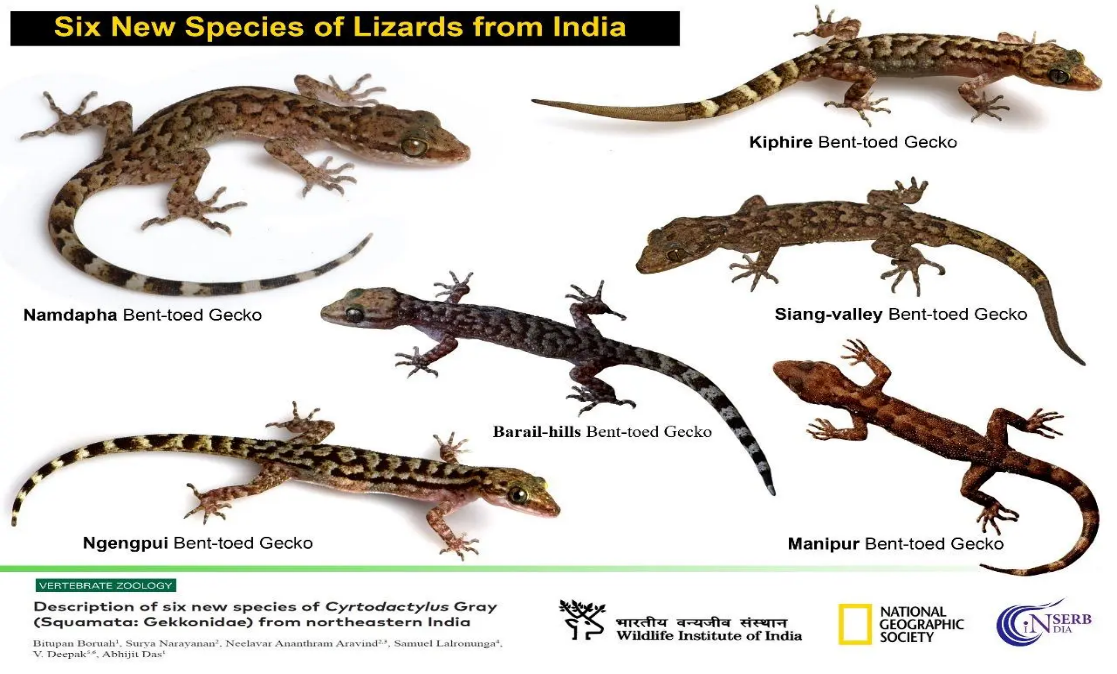Scientists from India and the UK have recently discovered 6 new species of bent-toed geckos in Northeast India.
|
Details of the discoveries |
|
|
Namdapha Bent-Toed Gecko (Arunachal Pradesh) |
|
|
Siang Valley Bent-Toed Gecko (Arunachal Pradesh) |
|
|
Nengpui Bent-Toed Gecko (Mizoram) |
|
|
Manipur Bent-Toed Gecko (Manipur) |
|
|
Barail Hills Bent-Toed Gecko (Nagaland) |
|
|
Kiphire Bent-Toed Gecko (Nagaland) |
|

References
The India Meteorological Department (IMD) has used the Standardized Precipitation Index (SPI) to study trends in precipitation and drought conditions across India.

References
Union Food and Consumer Affairs Ministry has launched the Price Monitoring System (PMS) Version 4.0 and Mobile App.
References
PIB | Price Monitoring System version 4
Recently, Indian Navy successfully conducted the Maritime Partnership Exercise (MPX) at Baltic Sea.
INS Tabar was built in Russia and was commissioned into the Indian Navy, on April 19, 2004.
In 2023, Indian Naval ships INS Rana and INS Sumedha undertook a Maritime Partnership Exercise (MPX) with French Navy ship FS Surcouf, in the Bay of Bengal on 30 June 2023.
Reference